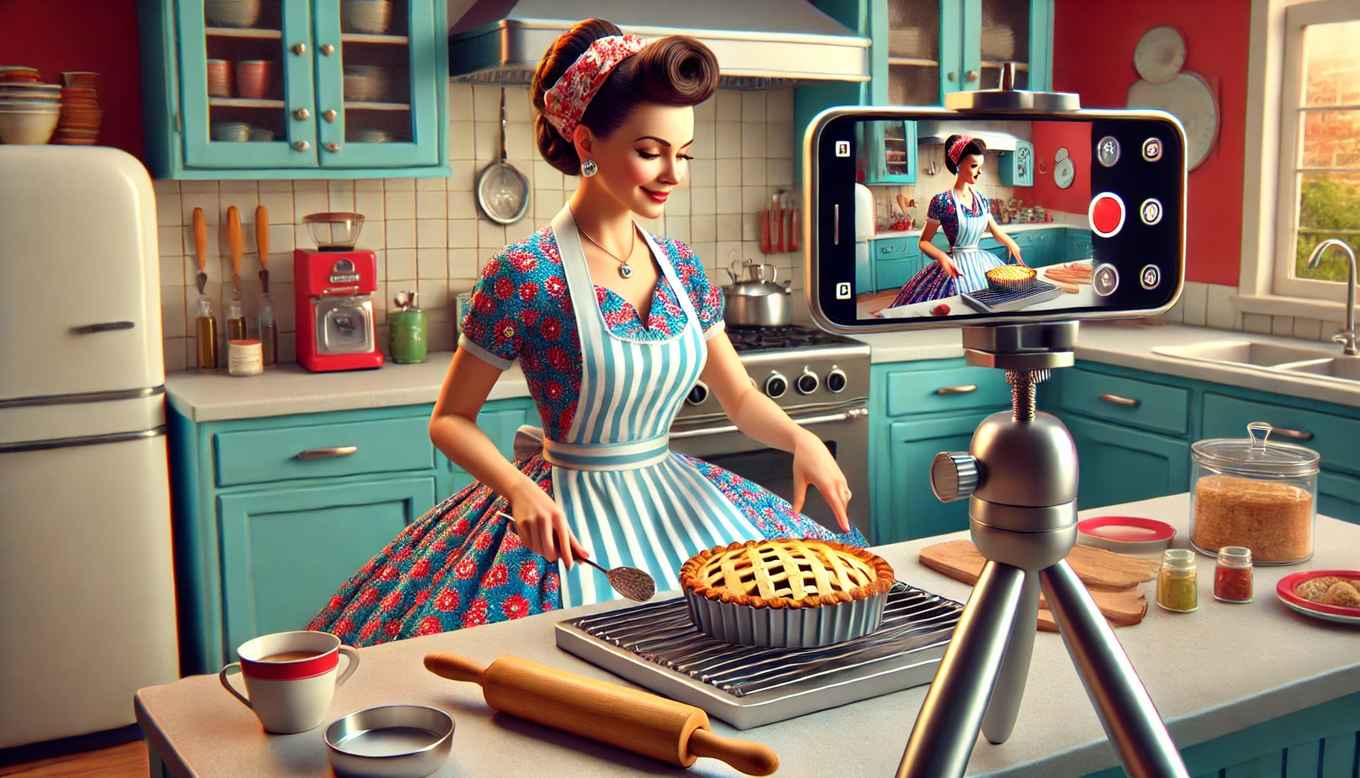‘With the demands of modern life, some women are drawn to the simplicity of traditional roles.’
Exploring the Tradwife trend.
25 July 2024

Modern life through an old lens
'Using hashtags and aesthetics, tradwives are adapting traditional values for the digital age,' explains Sarah Bracke, a sociology professor at the UvA, specialising in Gender and Sexuality studies. You see the women wearing vibrant floral aprons, showing their freshly baked pies and beautiful living rooms, and discussing the virtues of dedicating their lives to homemaking and being a mother, while their partners earn the family income.
Some women, growing up, didn’t feel represented by the empowering image of women portrayed by, for example, the Spice Girls.
Why the tradwife lifestyle appeals
The reasons behind the attraction of the tradwife lifestyle are as varied as the individuals who embrace it. Irene van Driel, a communication scientist of the Media Representation Initiative at the UvA, notes: 'Some women, growing up, didn’t feel represented by the empowering image of women portrayed by, for example, the Spice Girls. Or they find the demands of modern life overwhelming and are drawn to the simplicity of traditional roles.'
Liza Mügge, associate professor at the UvA’s political science department, recognises a historical pattern: 'Similar things happened after the feminist movements of the 1970s, when some women yearned for what they saw as simpler times.’
If we aim for traditional roles, it could set back the progress women have made in getting equal rights.
My body, my choice: Feminism and the tradwife movement
One of the most intriguing aspects of the tradwife movement is how it intersects with feminist ideologies. Some tradwives use the slogan 'my body, my choice' to justify their lifestyle, a phrase traditionally associated with feminist advocacy for bodily autonomy. Bracke critically assesses this: 'When you only think about personal choices, you overlook the bigger problems feminism tries to address.'
She explains that while individual choices matter, we also need to see how societal and economic structures affect what choices we even have. 'After decades of feminism fighting against these traditional boundaries, the tradwife trend represents a regression to those old-fashioned ways.'
Mügge adds to this discussion, warning that 'If we aim for traditional roles, it could set back the progress women have made in getting equal rights. It turns the complexity of feminism into ‘just simple lifestyle choices’.'
Although not everyone in the tradwife community openly supports right-wing politics, the trend provides a place for these ideas to spread.
Political overtones and racial implications
The tradwife trend isn't just about personal choices, it's tied up with politics and race. Mügge points out that tradwives often share nostalgic images of a time when women stayed at home, which matches up with conservative political beliefs. 'Although not everyone in the tradwife community openly supports right-wing politics, the trend provides a place for these ideas to spread,' she says.
Bracke adds: 'Some tradwives support ideas similar to those of far-right groups, particularly around increasing birth rates among white populations.' This shows the trend isn't just about lifestyles; it's part of bigger political ideas. The popularity of the tradwife trend is indeed growing alongside a rise in conservative politics, which often opposes modern ideas about gender equality. Social media helps spread these conservative ideas by making them look appealing.
Viral trends: The role of social media
Social media plays a big part in spreading the tradwife ideology. 'It's fascinating to see how a movement can expand and transform as it gains traction online, creating a cycle of interest that feeds into itself,' van Driel notes. 'Once you start looking at tradwife content, even if you're just curious, the algorithms can keep showing you more of it, and you might end up seeing extreme right-wing ideas,' she explains.
Social media also has a big impact on how we see gender roles, often reinforcing traditional stereotypes, says van Driel. She notices that girls often see stuff about beauty and fashion, while boys see more about science and sports. 'This divide is not just a reflection of societal expectations but also a driver of them,' the communication scientist notes.
She urges young people to diversify their media consumption to develop a broader worldview and resist the echo chambers created by social media. 'Media companies should promote diversity and reduce biases in their algorithms, thus supporting a more equitable representation of genders and cultures.'